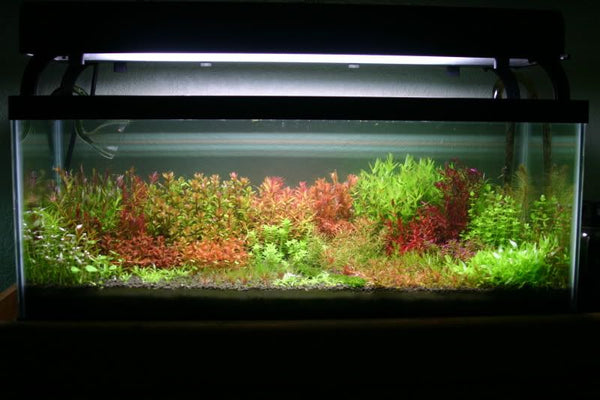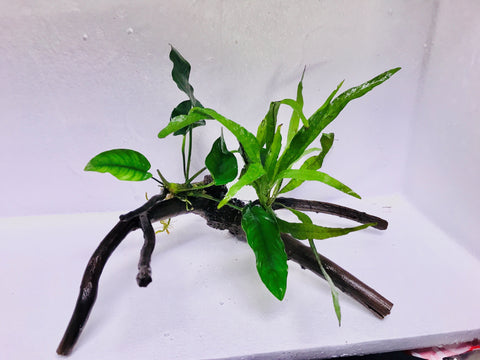Ludwigia inclinata EMERSED/POTTED
For Wholesale pricing please click on loginLudwigia inclinata is an extremely variable plant from Central and South America. It can be found growing emersed in marshes or submersed in fast-moving waters. Due to its exacting requirements and rapid growth in the aquarium, this species of Ludwigia is neither as popular nor as available as others from its genus.
Though its growth in the aquarium is distinctly hurried, the hobbyist keeping this plant will soon realize that this behavior is due to the fact that L. inclinata is among the aquarium plants which need the most light. Stems of this species can easily reach the surface of a 24 inch-tall aquarium in under a week (if the water column is fertilized regularly), where they will continue to grow beneath the surface, forming many lateral shoots. The plant will then have little interest in forming shoots further down its length and should be trimmed. Obligatory CO2 injection should be considered by the hobbyist if he or she wishes to achieve aesthetically pleasing growth, since this species, if grown with low light or no CO2often will turn greenish and lose its lower leaves. Diligent micronutrient fertilization is a must, but moderate nitrogen and/or phosphorus supplementation will evoke a redder hue in new growth.
Propagation of L. inclinata is very easy, if the plant is achieving a good rate of growth. To accomplish a relatively bushier effect, the aquarist may remove the top portion of a stem, leaving the bottom portion in the substrate. New growth will soon appear on the nodes. The top portion of the stem may be replanted or discarded.
Though its quick growth in the aquarium renders L. inclinata somewhat limited in its possible applications to an aquascape, it is not impossible to utilize effectively. Its orange-red leaves lend a good distinction to the midground of an aquascape if backlit by a bushy green plant, particularly those which are lighter in color (i.e., Myriophyllum mattogrossense). (Rec Retail $7.50)
Though its growth in the aquarium is distinctly hurried, the hobbyist keeping this plant will soon realize that this behavior is due to the fact that L. inclinata is among the aquarium plants which need the most light. Stems of this species can easily reach the surface of a 24 inch-tall aquarium in under a week (if the water column is fertilized regularly), where they will continue to grow beneath the surface, forming many lateral shoots. The plant will then have little interest in forming shoots further down its length and should be trimmed. Obligatory CO2 injection should be considered by the hobbyist if he or she wishes to achieve aesthetically pleasing growth, since this species, if grown with low light or no CO2often will turn greenish and lose its lower leaves. Diligent micronutrient fertilization is a must, but moderate nitrogen and/or phosphorus supplementation will evoke a redder hue in new growth.
Propagation of L. inclinata is very easy, if the plant is achieving a good rate of growth. To accomplish a relatively bushier effect, the aquarist may remove the top portion of a stem, leaving the bottom portion in the substrate. New growth will soon appear on the nodes. The top portion of the stem may be replanted or discarded.
Though its quick growth in the aquarium renders L. inclinata somewhat limited in its possible applications to an aquascape, it is not impossible to utilize effectively. Its orange-red leaves lend a good distinction to the midground of an aquascape if backlit by a bushy green plant, particularly those which are lighter in color (i.e., Myriophyllum mattogrossense). (Rec Retail $7.50)















